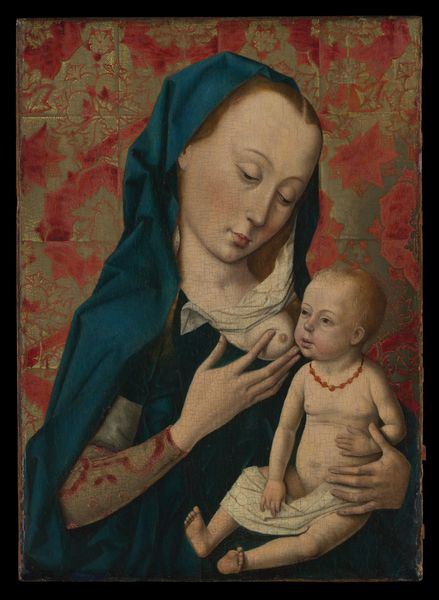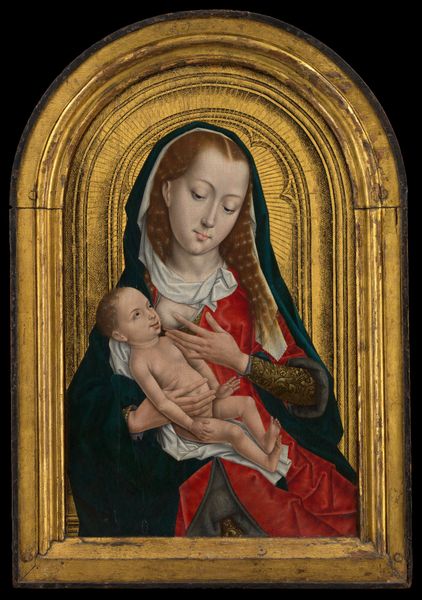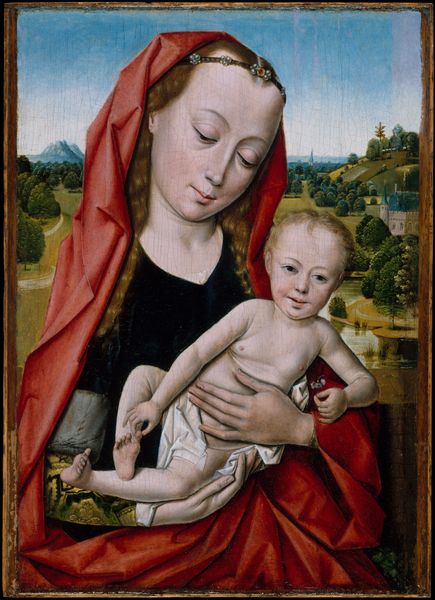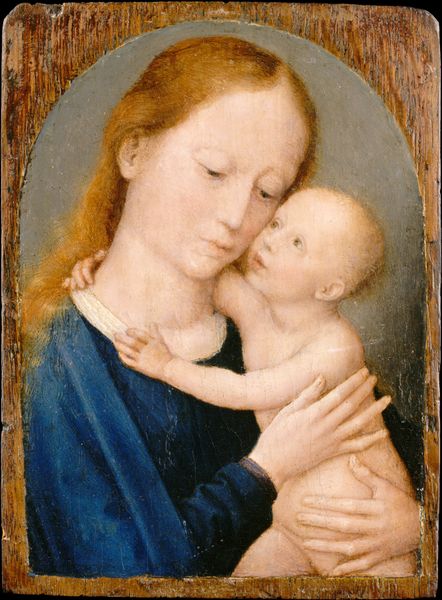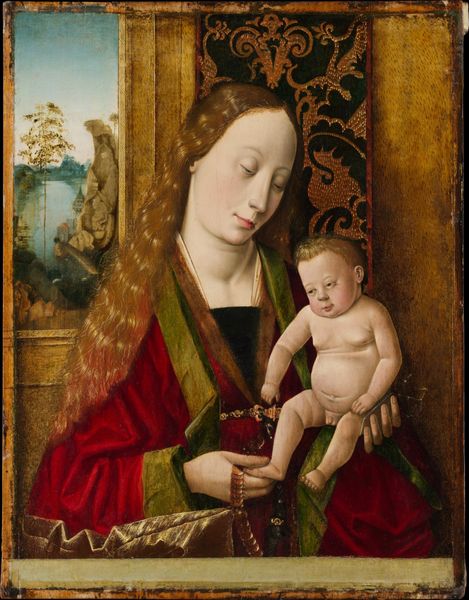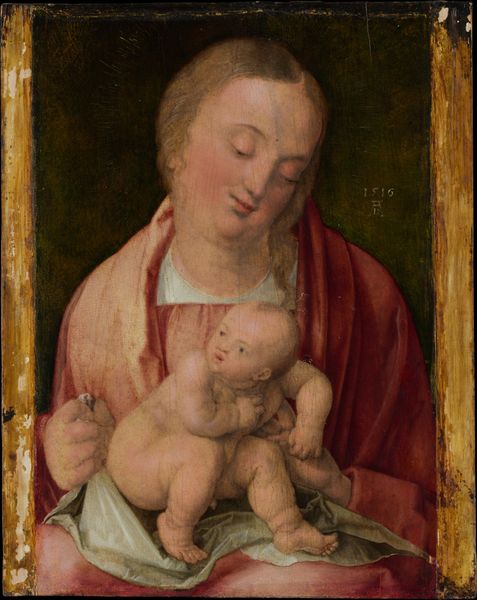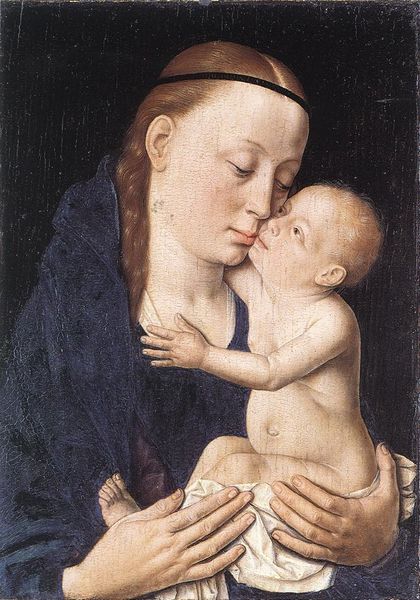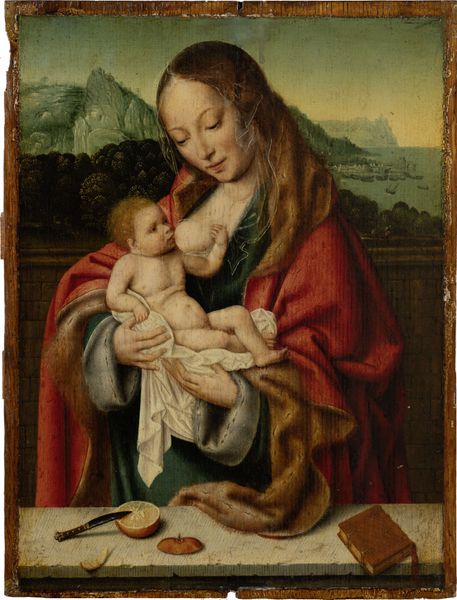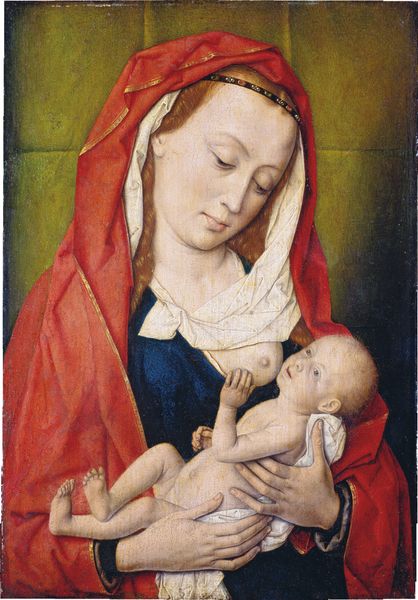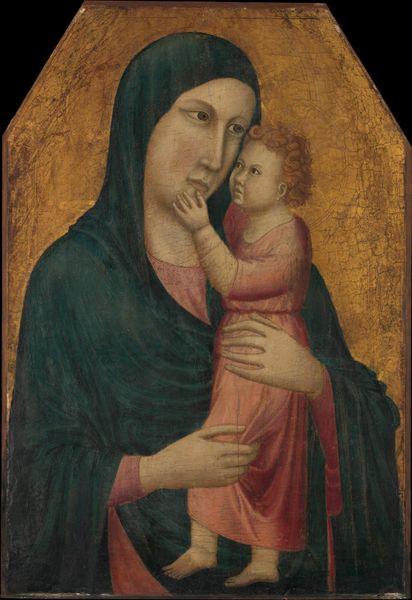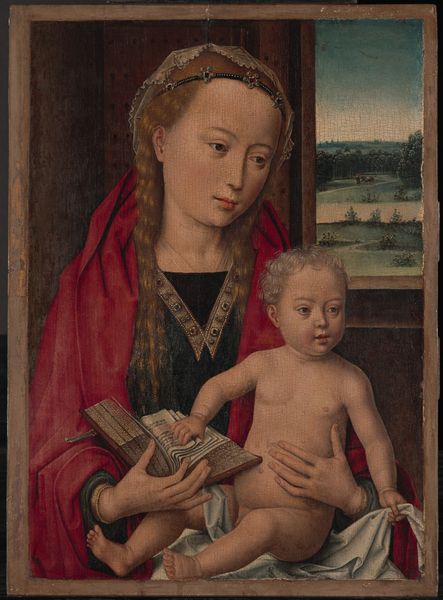
painting, oil-paint
#
portrait
#
painting
#
oil-paint
#
figuration
#
oil painting
#
northern-renaissance
Dimensions: 8 1/2 x 6 1/2 in. (21.6 x 16.5 cm)
Copyright: Public Domain
Editor: Here we have Dieric Bouts's "Virgin and Child," created sometime between 1455 and 1460. It's an oil painting, and there's something very tender and intimate about it. What stands out to me is how simply Bouts depicts the scene. What do you see in this piece? Art Historian: I appreciate your observation regarding the simplicity. Structurally, notice how Bouts employs a tightly compressed composition, focusing almost exclusively on the figures themselves against a dark ground. Consider also how the use of oil paint allows for a remarkable smoothness and blending of tones, particularly evident in the skin. How might this contribute to the overall feeling of serenity? Editor: Well, the smooth skin makes it feel...idealized, in a way? And maybe that lack of background lets you focus on the Virgin and Child relationship completely. Art Historian: Precisely. Note too the interplay of lines - the curving lines of the figures creating a sense of enclosure and protection. Are you persuaded that the artist has also drawn upon colour to assist his objective? Editor: Definitely, the dark robe really draws your eye to the skin and light cloth! The darker robe creates that intimate dark backdrop, in turn softening the mood even more by casting gentle shadows to suggest humility or a quiet strength. Art Historian: I agree with your point about the shadows which helps create a serene expression with no loud gestures. Focusing on elements within the frame and on line, shadow and use of color allowed the artist to construct and suggest this sense of pious warmth, inviting contemplation in this divine dyad. Editor: That's a wonderful analysis! I never quite looked at the colour and shapes in that specific manner. I now observe that the Virgin Mary and her Son seem connected further by use of shading which further intensifies their quiet exchange.
Comments
No comments
Be the first to comment and join the conversation on the ultimate creative platform.
